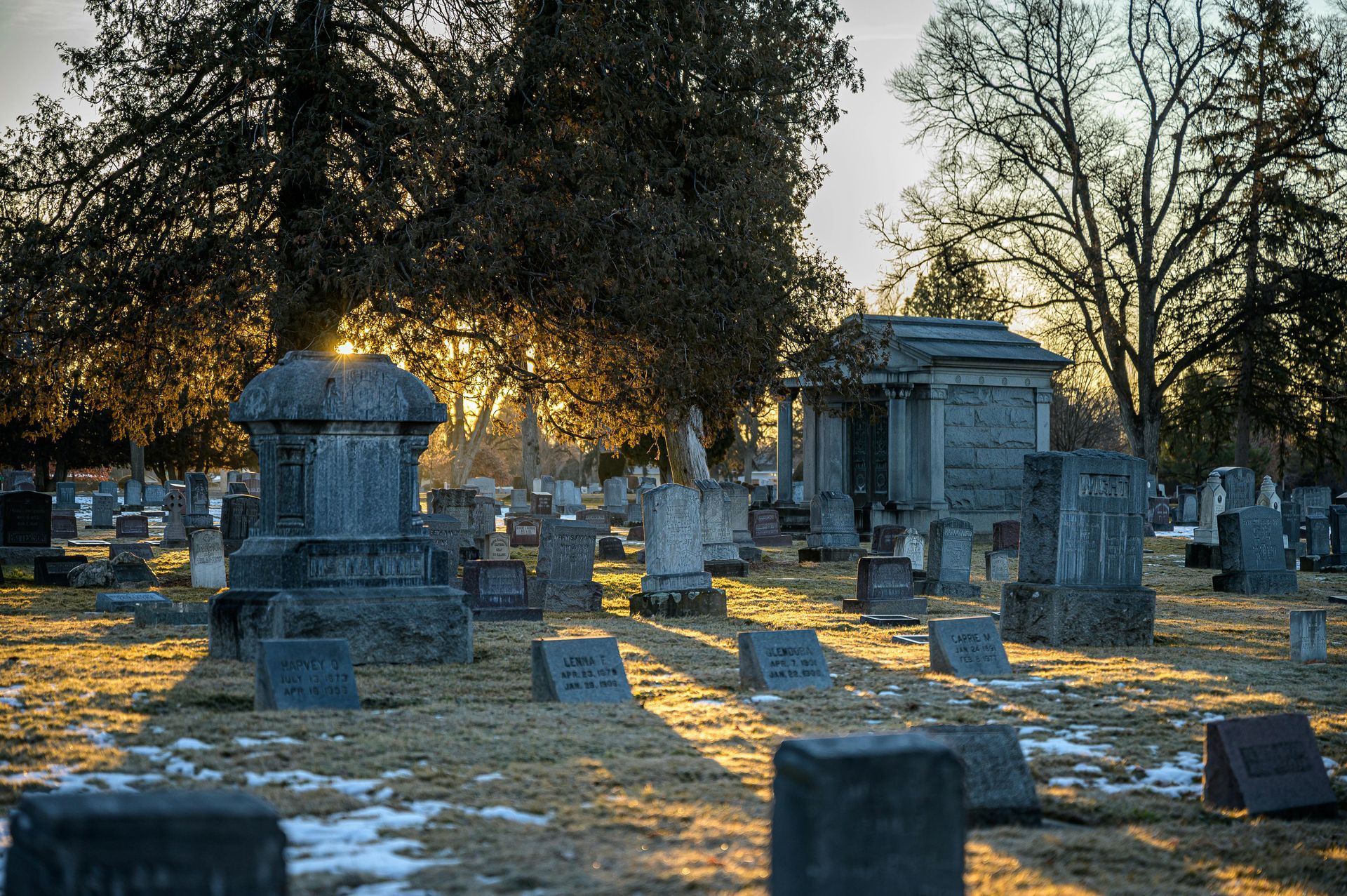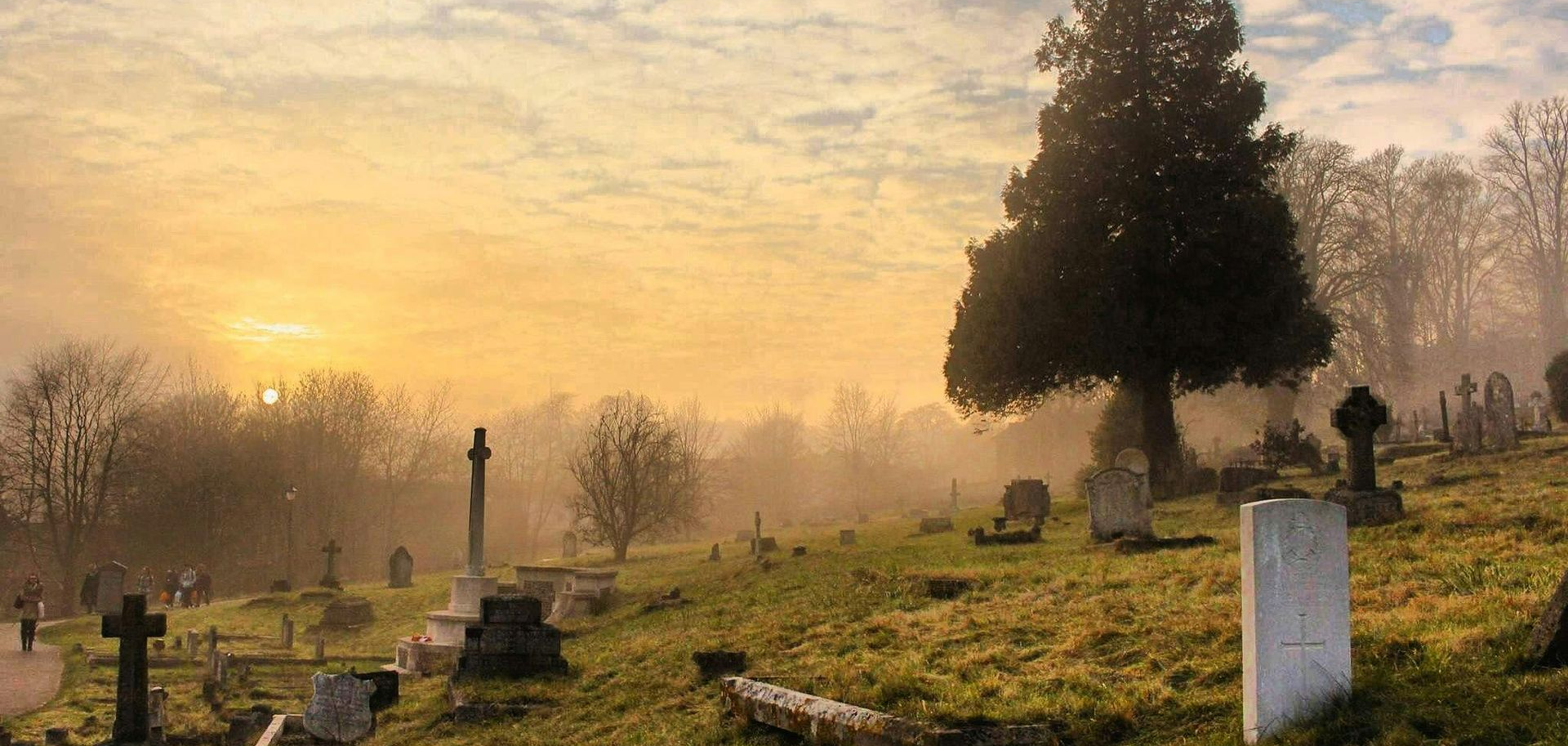March 28, 2022
Cemeteries and mausoleums—serving humans and pets alike—are niche, operational real estate. They generate income, require long-term stewardship, and are subject to unique legal and cultural expectations. That combination makes valuation anything but routine. At Argianas, we’ve appraised both human and animal cemeteries and understand that while the occupants differ, the core appraisal principles—and the need for careful due diligence—remain the same. What Drives Value? 1) Property Rights & Use Agreements Plot rights: Are interment rights sold in fee , leased for a term , or granted in perpetuity ? Multiple interments: Any modified plot-to-burial ratios (e.g., double-depth, family plots, cremains above caskets)? Rules & restrictions: Deed/contract language on transferability, memorial types, visitation hours, and disinterment. Maintenance obligations: Who is responsible for grounds and monument upkeep? Are perpetual/endowment care funds established and properly funded? 2) Operating Profile Cemeteries are often owner-operated or part of consolidated chains. They’re bought and sold on current and expected income-producing potential : Revenue streams: interment rights, mausoleum crypts, columbarium niches, cremation services, opening/closing fees, vaults/liners, headstones/markers, floral/placement services, and memorialization merchandise. Cost structure: labor and equipment, grounds and tree care, irrigation, roads, security, chapel/office utilities, repair of monuments and walls, compliance reporting, and professional fees. Phasing: Interment areas are commonly developed in stages to match projected absorption and manage capital outlay. 3) Market Context Location & entitlements: Confirm zoning for burial/interment, mausoleum height/placement, crematory permissions, and any historic or environmental overlays. Demand signals: Local mortality metrics, age distribution, cultural/religious preferences for burial vs. cremation, and competitor capacity/price points. Ownership & purpose: Nonprofit (religious, municipal, military, fraternal) vs. for-profit models can change pricing power, service mix, and allowable distributions. Not Your Great-Grandparents’ Cemetery Shifts in cost, culture, and environmental priorities have diversified offerings: Cremation growth has expanded demand for columbarium niches , scattering gardens, and remembrance walls—yet traditional burial persists , especially in faith-based segments. Design has trended from ornate headstones to memorial parks with low-profile markers and sculpted landscapes that simplify maintenance and present a cohesive aesthetic. Full-service facilities may include a mortuary, crematory, mausoleum, chapels, columbaria, sales offices, florist/retail, maintenance shops, and by-appointment counseling —each with its own cost and revenue profile. Properties often reserve areas for families, religious groups, veterans, or cultural communities , influencing pricing and absorption. Valuation Approaches That Actually Work Highest & Best Use (HBU) Start by testing legal permissibility, physical possibility, financial feasibility, and maximal productivity. For operating cemeteries, HBU is typically continued use; for obsolete sites with limited interment rights remaining, conservation, memorial-only use, or partial redevelopment may be a secondary scenario—subject to law and community standards. Income Approach (the workhorse) Sell-off (absorption) modeling for new or expanding sections—analogous to a subdivision analysis. Forecast price per plot/crypt/niche, pace of sales, mix of services/fees, operating costs, and capital expenditures by phase. Stabilized income capitalization for recurring services (e.g., opening/closing, care services, merchandise margins) where appropriate. Lump-sum negative reversion: Unlike most retail sell-offs, many cemeteries carry a perpetual maintenance obligation after sales conclude. Model this with a negative terminal value (the present value of perpetual care costs net of endowment support). Sales Comparison Approach Useful for benchmarking price per interment right, price per crypt/niche, or price per developed acre—adjusted for location, service mix, regulatory constraints, and endowment funding status. Because few assets are directly comparable, expect heavy qualitative adjustments. Cost Approach Helpful for valuing specialized improvements (mausoleums, chapels, columbaria, roads, ponds, walls, landscaping) and for testing replacement cost less physical , functional , and external obsolescence—especially in older parks. Endowment & Perpetual Care: The Valuation “Gotcha” Many jurisdictions require a portion of proceeds from interment sales to be deposited into endowment/perpetual care funds . Often only income (not principal) may be used for care, creating a persistent funding gap if investment returns lag rising costs. Key checks: Current market value of the endowment and recent contribution history . Spending policy (income-only vs. total-return), investment strategy, and governance. Alignment between future maintenance liabilities (paths, irrigation, trees, walls, crypt exteriors) and expected fund support. Any restricted gifts or donor-imposed limitations. Shortfalls require explicit recognition in the model—typically via the negative reversion or higher ongoing expense loads. Demand & Absorption Analysis: What to Measure Mortality and demographics: deaths per capita, age structure, migration patterns, household formation, cultural/religious composition. Service preferences: burial vs. cremation mix, crypt/niche uptake, green/natural burial interest, pet interment demand. Competitive landscape: active inventory by type, pricing tiers, pre-need vs. at-need sales, marketing practices, and historical absorption. Constraints: wetlands, karst/soil limitations, depth-to-water table, stormwater requirements, view sheds, historic designations, tree protections, and nighttime lighting/noise rules. Price Influencers for Ground, Crypts, and Niches Location within the park: proximity to water features, mature trees, chapels, roads, and prestigious sections. Monument type & material: marker vs. upright, granite vs. marble, custom sculpture. Indoor vs. outdoor: climate-controlled mausoleums and interior niches typically command premiums. View and exclusivity: family gardens, veterans’ sections, religious sections, or high-status courts. Service bundle: opening/closing, vault/liner, memorialization, perpetual care contributions, and financing terms. Special Cases Historic cemeteries: Often limited new sales but ongoing responsibilities; value ties to heritage significance , tourism/education programs, grants, and memorial events, offset by strict preservation requirements. Pet cemeteries & hybrid parks: Demand drivers, pricing, and regulatory frameworks can differ; operations may emphasize memorialization services and cremation options. Crematories: Stand-alone or on-site units bring air-quality permitting, stack testing, and public-perception considerations—plus distinct revenue and hours-of-operation profiles. Common Mistakes That Skew Value Treating the asset like a simple land subdivision without modeling perpetual maintenance . Ignoring contract language that limits resale/transfer or shifts maintenance obligations. Overlooking endowment shortfalls or assuming total-return spending where only income is permitted. Using generic cap rates not calibrated to sales pace risk, demographic shifts, and regulatory constraints . Underestimating infrastructure replacement cycles (roads, irrigation, retaining walls, crypt exteriors). Due Diligence Checklist (What We’ll Ask For) Organizational: ownership type (for-profit/nonprofit), corporate structure, historical financials (5+ years), pre-need liabilities, and trust statements. Legal: zoning/entitlements, plot/interment agreements, perpetual care covenants, environmental/historic restrictions, and crematory permits (if applicable). Physical: current site plan and remaining capacity by section, soils/hydrology reports, condition of improvements, and phase readiness. Market: price sheets, competitor survey, absorption history, and marketing plans. Trusts: endowment balances, contributions/withdrawals, spending policy, investment statements, and governance minutes (where available). The Outlook Cemeteries require large land areas and upfront capital, with revenues realized gradually over long absorption periods. Over time, functional , physical , and external obsolescence can accumulate—while the obligation to maintain grounds in perpetuity does not diminish. Endowment governance and prudent capital planning are therefore as critical to value as location and sales velocity. How Argianas Helps We build defensible, transparent valuation models that reflect: Realistic absorption and pricing by product type. Operating expenses and capital needs by phase. Endowment mechanics and perpetual-care obligations. Sensitivity to demand, regulation, and cost inflation. Have a tricky property and not sure where to begin? We’re dead serious about getting it right. Call the Argianas team at 630.390.0113 —we’re dying to talk to you!

